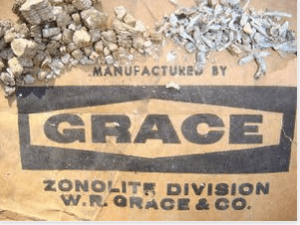US Geological Survey Scientists Develop Technique to Detect Vermiculite
Scientists from the United States Geological Survey (USGS) announced this week that they have developed an onsite technique that will allow building inspectors to determine whether vermiculite insulation contains amphibole asbestos.
An article about the novel technique was published this week in the periodical American Mineralogist.

Add to that the fact that the majority of this vermiculite insulation was made by W.R. Grace and Company with vermiculite from their infamous Libby, Montana vermiculite mine – contaminated with asbestos – and it’s easy to understand the concern.
A USGS spokesperson explains that, normally, when vermiculite insulation is found in an attic, testing it for asbestos involves taking a sample and then sending it out to an off-site laboratory for analyses.
The latter can take several days to more than a week for results.
“The goal of this USGS study was to find an onsite way to test for asbestos by determining if near-infrared reflectance measurements, using portable spectrometers, could be used to reliably identify the source of vermiculite ore and therefore its potential to contain asbestos,” explained Denver-based USGS scientist and lead author, Gregg Swayze. “We achieved this goal.”
For the study, Swayze’s team studied 52 vermiculite samples from various places around the world including Libby, Montana; Louisa, Virginia; Enoree, South Carolina; Palabora, South Africa; and Jiangsu, China.
“All of the nearly two dozen Libby vermiculite insulation samples examined with scanning electron microscopy in this study contained asbestiform amphiboles compared to relatively little asbestos to none in samples from the other locations,” a synopsis of the report explained. Spectroscopy accurately determined the origin of the vermiculite insulation samples.”
“Based on medical studies, there is general agreement that all Libby vermiculite insulation is potentially hazardous,” said Swayze. “This study demonstrates that spectrally determining the source of attic vermiculite as Libby provides enough information to make a remediation decision.”
Building inspectors can test vermiculite insulation on-site with an inexpensive portable spectrometer, the synopsis explains. If it appears to be tainted, the inspector can immediately suggest remediation options, which could include removing the insulation and replacing it with something else or encapsulating the existing insulation to make it safe for the homeowner or building occupants.
